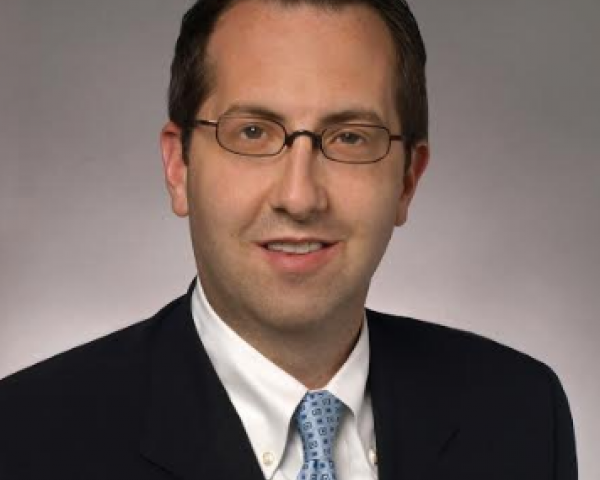Like many others, I took two days out of a busy week, flew to Las Vegas (why not?) and joined the standing-room-only crowd at the inaugural InsureTech Connect 2016, recognizing that Dreamforce, the HR Tech Conference and my day job of serving my clients were all competing for my attention.
I'm glad I did!
Not only did I reconnect with old friends/colleagues, meet new ones and conquer the Stratosphere, but I also spent two days surrounded by some of the best and brightest in insurance. It left me feeling that one immutable fact is clear: Change is in the air
. In that spirit, here are some of the things I took away and the questions I'm going to keep in mind to help move my clients and the insurance industry forward.
[One note: I’ve resisted the urge to call out specific examples of startups that support my points. That's not because I don’t have those examples. It's because I didn’t meet every startup, I didn’t hear every panel and story, and there are too many great examples of creative work being done to solve some of the biggest challenges this industry faces. So I’ll err on the side of not creating potential bias. If you want to put me on the spot, feel free to call me and ask me who impressed me the most.]
“What’s Your Problem?”
The first time I heard that question, I did a double take. The second time I heard it, I understood. And the third time, I decided it’s the right question to ask.
See also: Insurtech: One More Sign of Renaissance
Maybe it’s the fact that I spend most of my time talking to incumbents, but I'm not used to hearing the problem statement first. At the conference, every conversation I had with a startup began quite clearly with the problem that the startup is working to solve and the (potential) solution. It's core to their introduction but, more importantly, it's core to their DNA. It’s refreshing.
We should all wake up every day with the simple goal of solving one problem — a small one. Think about how much an organization could accomplish with that orientation. Think about the impact it could have on customers. Sure, not all problems can be solved in a day, and some, perhaps, can't be solved — period. But think about the potential for idea generation, or, dare I say, innovation.
Start with the problem.
Sure, I was interested in each person’s background. Where he/she was before, what experiences shaped his/her journey, etc. These are important questions that help qualify my impressions of whether that person can solve the problem. But all too often I hear people introduce themselves with their role/title, company, responsibilities, etc. I, for one, plan to remind myself to talk about what problem I’m solving — and how.
Product? Or User Experience?
There was also healthy debate at the conference as to whether a better experience was worth a premium and whether it could the answer to breaking the cycle of price commoditization. The startups surely believe it to be the case, and they aren’t wrong. An elegant experience is a compelling source of differentiation.
There was quite a bit of discussion, though, as to which comes first, user experience or the product. Is the user experience the key? Will product rule the day? The consensus was that both are necessary. No matter how great the product is, if you can't sell and service it, it's unlikely to be sustainable and successful. If the experience stinks, no one is likely to buy the product, no matter how much that product is wanted, is necessary or is great. Both are critical. Neither, alone, is enough. This is nothing new.
But, as I frequently discuss with clients, being great at everything (product, distribution and service) is hard, expensive — or both. I liken it to being the best “all-around athlete.” How many people wake up one day, decide “I’m going to be a decathlete” and execute? That would take too much time, too much effort and, in all likelihood, could result in being mediocre (or worse) at all 10 sports.
Pick where you want to be great, and be outstanding at it. Do it effectively, elegantly and unlike any other. Be good in most other areas. And where you have issues, start to solve one problem at a time. Rome wasn’t built in a day.
Incremental or Transformative?
How many times did we hear the word “incremental”? 10 times? 100 times? More? I lost count. My point is that
small incremental changes can add up, potentially even to something big. Piece together a bunch of small ideas, small successes and now you’re beginning to talk about a meaningful and achievable plan. Piece together a few startups each solving a different problem — and maybe now you’ve veering into the realm of transformation.
See also: Calling all insurtech companies – Innovator’s Edge delivers marketing muscle and social connections
What is so bad about incremental change? Small problems are easier to understand, to dissect, to solve. It's easier to gain support for small projects. It's easier to measure the effect of small changes to measure the return on small investments. Maybe most importantly, it's easier to stomach the loss on a small failure.
Is Failure OK?
I’ve spent my whole career avoiding failure, afraid of failure. I’ve even avoided the word. It was not an option. But, let’s be honest, there are very few places where failure is catastrophic. Sure, I’d like to avoid it entirely when it comes to flying, but, otherwise, is it so bad?
It was liberating to hear open and honest talk of failure. How many startups are going to make it? Not all of them; that's for certain. Does anyone want to fail? Of course not. But learning from failure is part of the startup culture.
Looking out of my hotel room window, I was struck by the hulking darkness of a hotel north on the strip. Surely it was too large to be empty. A little research later, I came across the story of the Fontainebleau Las Vegas, a $2.9 billion, 3,889-room, 68-story, unfinished resort and casino development. Construction topped out in 2008, and it still stands as the second tallest structure in Las Vegas (second only to the Stratosphere, but more on that later). Yet at 70% complete, it fell into bankruptcy and sits unfinished to this day, nearly a decade later. It's only one example of failure on the Strip — there are several unfinished hotel projects. But all of the other failures are smaller and less complete. The Fontainebleau Las Vegas stands as a lesson to me: if you're going to fail,
fail small, fail early and learn as much as possible from the experience along the way.
Days, Months or Years?
I'm not known for my patience. Startups aren’t either. Insurers, on the other hand, aren’t known for their agility. I’m reminded of the fable of the tortoise and the hare.
What struck me throughout the stories I heard in the two days was the need to quickly demonstrate value or to die trying. Startups have no choice; their business model depends on it. Insurers aren’t all that different, beholden to their stakeholders or Wall Street, but they tend to measure the horizon of projects in quarters or years, not days or weeks. Insurers with their “endless capital” don’t have the looming fear of running out of cash. But maybe that motivation would be beneficial.
I heard numerous stories of how startups proved possible in weeks what insurers might have otherwise spent months or more trying to build. Was the result production-strength? Probably not. Will it need to be? Sure.
Nothing can be more frustrating than watching a great idea die on the vine because the overall effort necessary is too big, too long, too costly and, therefore, impossible to justify, to start and to finish. Take a use case,
prove it works in weeks, implement it, expand on it and move on to the next test. Success begets success. Small successes can compound. Projects shouldn’t take months or years.
No Risk, No Reward
My time at the conference ended with a personal test. In my last meeting, just as we were wrapping up and I was starting to think about settling in for a couple of hours to catch up on the better part of two days’ worth of missed email, I was posed a simple question: “Did you know there are rides on top of the Stratosphere?” Um, no. OK, I’ll bite. “There's a ride that shoots you up in the air a couple hundred feet and then lets you free fall back down. Want to go with me?” Normally, I’d squeeze every minute of productivity I could out of a business trip. Normally, I’d miss out on an opportunity to stop, smell the roses and have a personal experience worth telling about. Normally, I’d say no.
But instead, I asked only one question: “Do I have to sign any waivers that make it clear that, if I die, my insurance policies won't cover me? Because I’ve got a rule against any activities that nullify my insurance coverages.” I got a laugh but not an answer. (I was serious — that's a rule of mine.) But I said yes. And I’ve got the views, the pictures and the story to remember as a result.
See also: 8 Exemplars of Insurtech Innovation
The organizers of InsureTech Connect took a risk. Would speakers line up? Would people register? Would the panel discussions be enlightening? Would people stand on the little squares and make Brella a success? The answer was an unambiguous — and resounding — yes. And I'm thankful the organizers took this risk, because we all benefited greatly from the two days, from the healthy debate, from the new connections and from the experiences we collectively had.
I, for one, am counting the weeks (not months) until the second annual InsureTech Connect. What will we accomplish between now and then? I can't wait to find out.
These are just my impressions. If you agree, please let me know. If these are trivial or obvious to you, please share your thoughts. If you disagree, tell me why. And for those of you who are in Vegas, did you know there are rides on the top of the Stratosphere?


